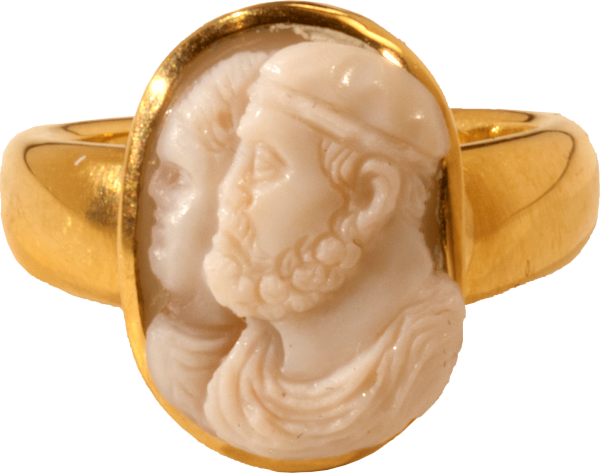


Renaissance Marriage Ring
, Western Europe, late 16th century


Renaissance Marriage Ring
Description
The gold hoop with D-section widens towards shoulders that end in elaborate scrolls. The underside of the square bezel bears cruciform decoration with traces of black enamel. The bezel has a stepped base composed of flat cusps on each side and is set with a table-cut rock crystal in a box setting. Originally, the ring would have been richly enameled with blue, green, white, and red; traces of white enamel remain.
Rock crystal was valued in the Middle Ages for its hardness and brilliance. Considered a symbol of purity, it was frequently used in reliquaries and other Church objects. In the Renaissance, it came to be employed in place of diamonds in settings, such as this box-bezel type. This ring is an antecedent of the solitaire marriage ring; evidence for diamond rings of this type being used as marriage rings dates to the thirteenth century.
Literature
For comparisons, see ex-Harari Collection (a square box ring set with a ruby; published in Boardman, 1977, no. 173); Oxford, Ashmolean Museum, F466 (a similar ring set with a ruby; published in Taylor, 1998, no. 664); London, Victoria & Albert Museum, 30-1894 (a similar ring set with a rock crystal; published in Oman, 1930, 292).
